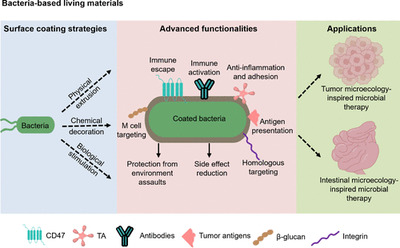الفئات
العلامات
الأرشيف
Step-by-Step Guide to Bacterial Protective Coverings
-
Bacteria, as unicellular organisms, possess intricate structures that enable them to survive in diverse and often hostile environments. Central to their resilience are the protective coverings that shield them from physical damage, osmotic stress, and host immune defenses. Understanding these structures is crucial, especially when considering the effectiveness of antibiotics like ceftriaxone, which target specific components of bacterial cells.
1. Bacterial Cell Envelope: The First Line of Defense
The bacterial cell envelope comprises several layers that collectively serve as the primary barrier between the bacterium and its surroundings:
-
Plasma Membrane: This lipid bilayer regulates the entry and exit of substances, maintaining the internal environment of the cell.
-
Cell Wall: Located outside the plasma membrane, the cell wall provides structural support and protection. It is primarily composed of peptidoglycan, a polymer that gives the cell its shape and prevents osmotic lysis.
-
Capsule: Some bacteria possess an additional outer layer known as the capsule, made of polysaccharides. This structure aids in retaining moisture, protecting against desiccation, and evading phagocytosis by host immune cells.
-
S-Layer: In certain bacteria, an S-layer composed of protein or glycoprotein forms a crystalline lattice on the outer surface, offering protection against environmental stresses and contributing to cell shape maintenance.
2. Mechanisms of Antibiotic Resistance
Bacterial protective coverings not only shield against physical threats but also play a pivotal role in antibiotic resistance:
-
Impeded Antibiotic Penetration: The outer membrane of Gram-negative bacteria acts as a selective barrier, limiting the entry of antibiotics like ceftriaxone.
-
Efflux Pumps: Some bacteria possess membrane proteins that actively expel antibiotics, reducing drug concentration within the cell.
-
Enzymatic Degradation: Certain bacteria produce enzymes, such as β-lactamases, that degrade antibiotics like ceftriaxone, rendering them ineffective.
3. Role of Ceftriaxone in Overcoming Bacterial Defenses
Ceftriaxone is a third-generation cephalosporin antibiotic renowned for its broad-spectrum activity against various bacterial pathogens. Its efficacy is attributed to:
-
Inhibition of Cell Wall Synthesis: Ceftriaxone targets penicillin-binding proteins involved in the final stages of peptidoglycan synthesis, leading to cell wall disruption and bacterial cell death.
-
Resistance to β-Lactamases: Compared to earlier cephalosporins, ceftriaxone exhibits enhanced resistance to hydrolysis by certain β-lactamases.
-
Extended Half-Life: The drug's prolonged half-life allows for once-daily dosing, improving patient compliance.
4. Importance of Sourcing from Reliable Ceftriaxone Suppliers
For healthcare providers and pharmaceutical companies, sourcing ceftriaxone from reputable suppliers ensures the acquisition of high-quality, effective medications. In India, several manufacturers are recognized for their commitment to quality and compliance with international standards.
Notable suppliers include:
-
Venus Remedies Ltd.: With over 30 years of expertise, Venus Remedies is a trusted manufacturer of ceftriaxone injections, known for their innovation and adherence to WHO-GMP standards.
-
Krishlar Pharmaceuticals: An ISO 9001:2015 certified company, Krishlar offers third-party manufacturing services and is recognized for its progressive approach in the pharmaceutical industry.
-
GMT Internationals: Known for their commitment to quality, GMT Internationals provides ceftriaxone injections and offers third-party manufacturing services, ensuring accessibility and affordability.
-
